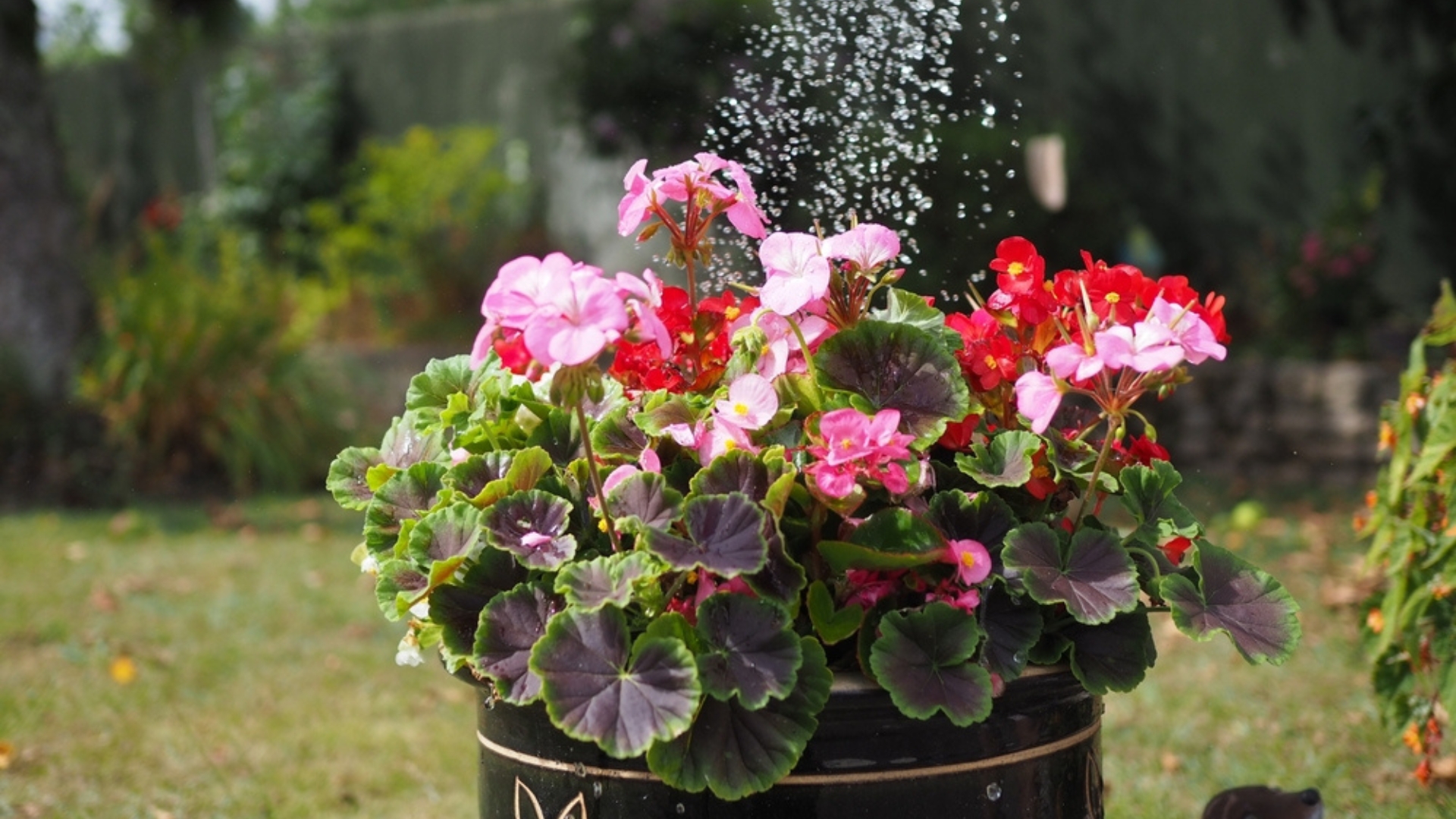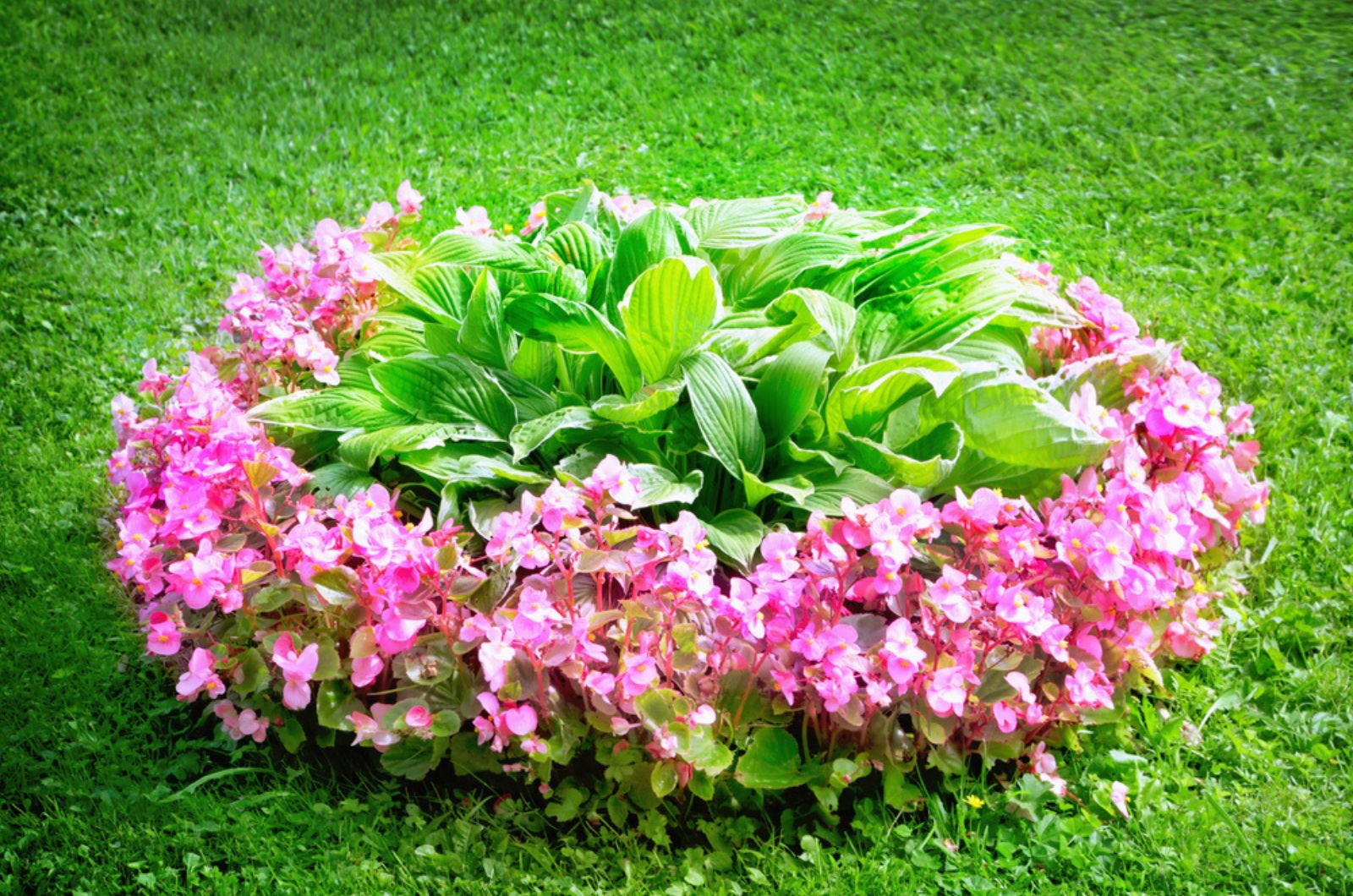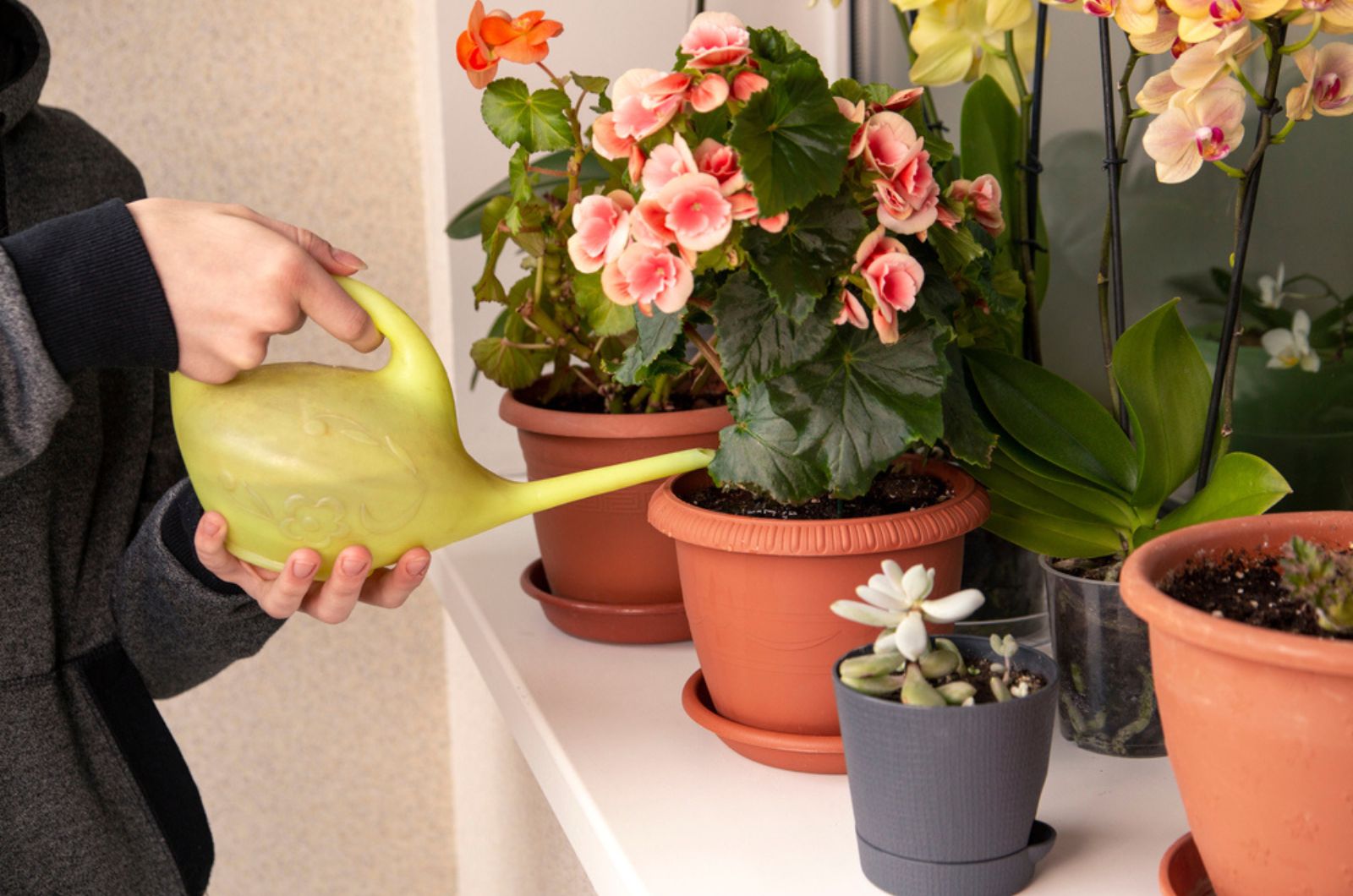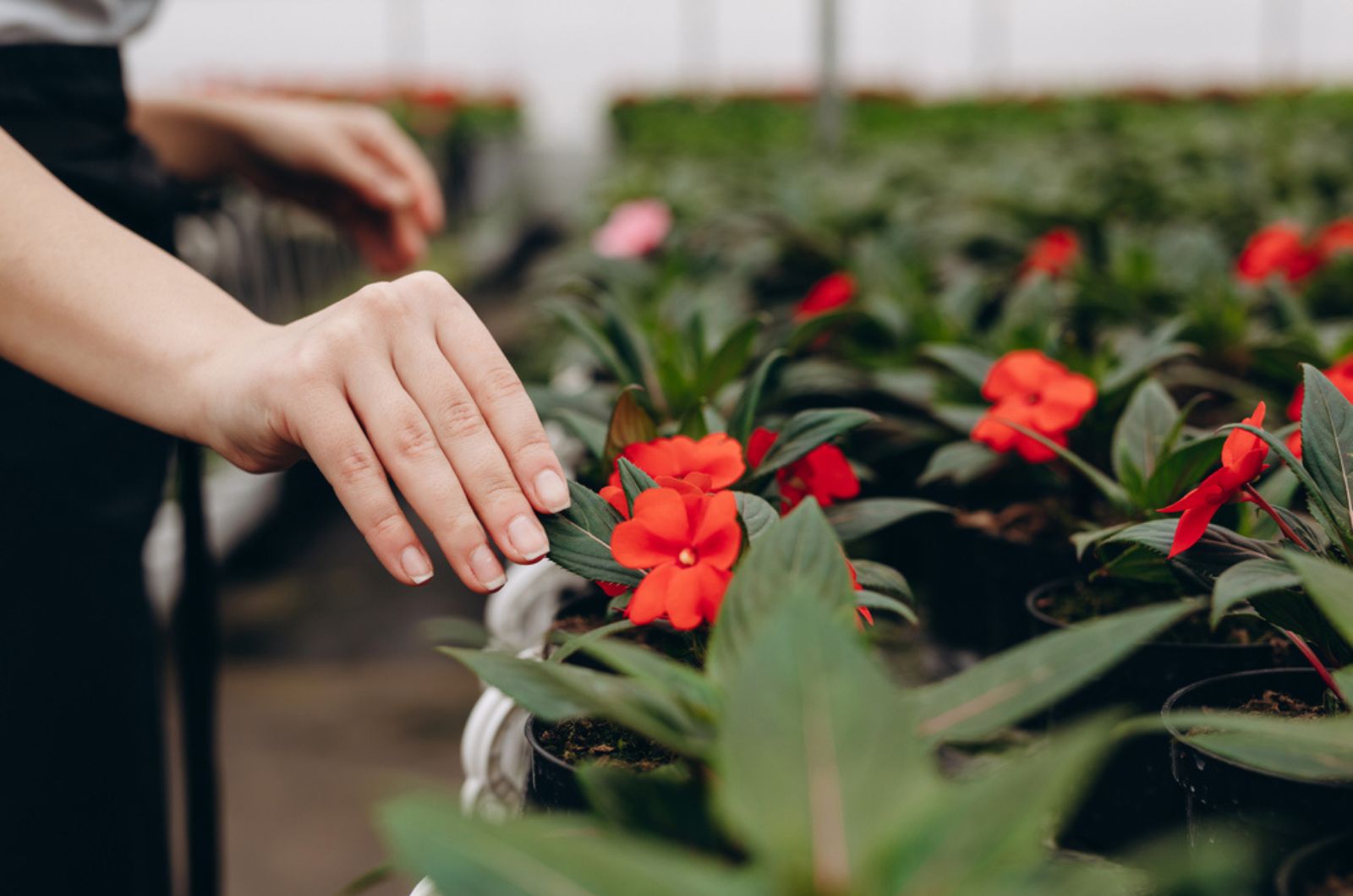An important part of every plant care guide is watering; and begonias are no exception!
Whether you are growing begonias in ornamental beds and borders or indoors as a houseplant, getting on the right watering schedule is the key to thriving begonias.
Watering frequency might vary depending on different factors, including its environment and growing zone in the region.
In this guide, we’ll explore the ins and outs of watering begonias, ensuring you provide the right moisture for these beautiful and diverse plants.
Let’s get started!
How To Water Begonias In Open Ground
If you grow begonias in garden beds, then you have to provide them with exceptional drainage because oversaturated soil can lead to numerous plant diseases such as root rot, leaf spot, and many others.
The amount of water your plant needs will vary based on the climate in your region. You won’t have to worry about watering begonias if you live in regions with regular rainfall, but those in drier climates might benefit from weekly watering.
I would suggest you water your begonias once every four days, or when the soil’s surface has dried to the touch
This might be useful: 5 Steps To Propagating Begonias From Leaf Cuttings
How To Water Begonias In Containers
Unlike begonias grown in open ground, potted begonias require frequent watering.
Weekly irrigation will be enough in the spring and summer, when the plant is actively growing. But the watering frequency should be increased as the temperature rises throughout the season.
Humidity levels and the container material will also affect the watering needs – it’s best you inspect potted begonias on a daily basis. Look for stress or any other signs that your plant might need watering, such as drooping or wilting.
This might be useful: 6 Easy-To-Follow Tips For Potted Begonia Care
How To Water Begonias In Winter
During the winter months, your begonias won’t need as much watering as they did during the spring and summer. Neglecting an underwatered begonia is much less likely to occur over the winter.
Hardy varieties planted on raised beds probably don’t need extra water. However, if the weather is exceptionally dry or warm, irrigation could be required.
It’s important to avoid overwatering during the colder months because that’s when root rot is most likely to occur. Potted plants that have been brought back indoors might benefit from weekly irrigation.
Throughout the winter, pay close attention to the humidity levels. Give your plants regular misting or set up a pebble tray nearby.
Related: How To Overwinter Begonias Indoors
How To Use Liquid Fertilizers For Begonias
In addition to understanding how to water begonias, it’s crucial to know all about applying fertilizers to make your begonias bloom and thrive.
One quick and simple method for fertilizing begonias using liquid fertilizers in the early spring is applying balanced feeds that are specifically made for ornamental plants.
When necessary, fertilize plants all season long, following your regular watering schedule. When your begonia stops blooming, cut back on feeding so the plant has more time to get ready for winter.
Also read: 9 Best Types Of Trailing Begonias + The Complete Care Guide





